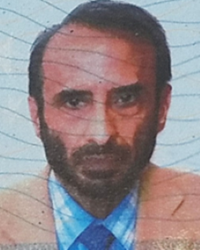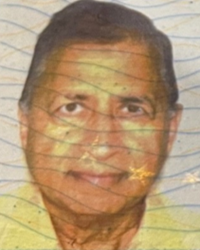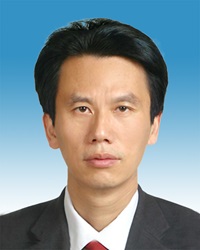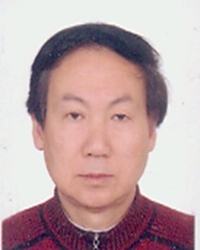|
Professor with the School of Mathematical Science, Hebei Normal University Brief Biography: She received the Ph.D. degree from Peking University. She served as the Secretary of the 2002 International Conference of Mathematicians and is currently the Secretary General of the Hebei Association of Computational Mathematics, a member of the IEEE. Her research interests include wavelet analysis, image processing, deep learning, and augmented reality. She has completed 6 NSFC projects and authorized more than 10 patents and software copyrights. In 2015, the “Smart City and Educational Equity” project she led won the 2015 World Smart City Award, achieving a historic breakthrough for China in this award. From the outside. She has also participated in the development of video security monitoring for wind power equipment in Xinjiang, network video monitoring system for Daqing Oilfield, and crowd video monitoring for digital tourism in Beidaihe. Development and Application of Baltamatica Image Processing Toolbox Abstract In this report, we will introduce the development motivation, function modules and application examples of Baltamatica Image Processing Toolbox. Baltamatica is the first domestic general scientific computing software developed by the School of Mathematical Sciences of Peking University, National Engineering Laboratory for Big Data Analysis and Applications, and Peking University Chongqing Research Institute of Big Data. Image Processing Toolbox aims to provide powerful tools and platforms for image processing and applications. It supports processing of 2D and 3D images, and provides a comprehensive set of reference-standard algorithms and apps for image visualization, processing, analysis, and algorithm development. |
Professor of University of Pennsylvania Philadelphia Brief Biography:His experience almost covers the entire period of existence in the fields of 3D medical image processing, visualization, analysis, and medical applications. He is a pioneer in several fields, including 3D visualization, 3D image processing, 3D digital geometry and topology, and image segmentation, intensity standardization of MRI and PET, and more. He developed the first known software packages for 3D image processing and visualization (3DVIEWNIX and CAVASS are the most recent examples in their lineage) and widely distributed them in source code before the term "open source" appeared in 1980. In 1982, he published his first paper on nuclear magnetic resonance imaging processing with Nobel laureate Paul Lauterberg, when he began producing early nuclear magnetic resonance images of the human body. His current citation factor for Google scholars is: total citation=26000, h-index=79, i-10 index=286. Hybrid Intelligence (HI) for Body-wide Medical Image Analysis. Abstract Medical image analysis is undergoing a transformation engendered by the advent of and rapid advances in deep learning (DL) technology. Image analysis in the medical field is uniquely different from other areas in two regards. (i) In medical images, there is always an underlying “anatomy of the scene” that formulates the image, where the anatomy is the “same”. In general imagery, there is usually no “anatomy”. This unique order in medical imagery can be exploited to greatly simplify the DL models and substantially enhance their accuracy, efficiency, robustness, and generalizability. (ii) Owing to the human expertise developed over centuries in medicine, human experts, constituting natural intelligence (NI), are much better than AI methods in global tasks such as grasping the overall anatomy, recognizing objects, etc., in a given image. Conversely, AI (DL) methods excel at precise delineation of local details and objects once recognition help is offered to them. This Recognition-Delineation dilemma becomes apparent if we study the evolution of DL methods. From the early fully connected to the recent transformer networks, the advances have sought repeatedly to address the global “recognition” challenges, or the R-problem, which still remain daunting with ever increasing demands on data sets for training. We argue that by properly combining NI and AI, and bringing discipline to data and ground truth definitions, hybrid intelligence (HI) methods can be created for medical imagery by fully exploiting the complementary strengths of AI and NI. In this presentation, I will demonstrate HI methods in the context of image segmentation and showcase two applications: (1) Restrictive respiratory diseases, and (2) Radiation therapy planning. |
The Distinguished Professor of Electrical and Computer Engineering Brief Biography: Bir Bhanu is the Distinguished Professor of Electrical and Computer Engineering, Marlan and Rosemary Bourns Endowed University of California Presidential Chair in Engineering and has served as the founding Director of the Center for Research in Intelligent Systems (CRIS) for over 21 years at the University of California, Riverside (UCR). He was the first Founding Faculty of the Bourns College of Engineering (BCOE) at UCR and the Founding Chair of Electrical Engineering which was the first program in engineering. He has pioneered the areas of 3D object, target and human recognition; machine learning in computer vision; dynamic scene analysis and motion understanding, synthesis of recognition systems; and human relevance feedback for image database queries. With 12 books, more than 180 long journal papers, 386 reviewed conference papers, 58 book chapters, 16 special issues of top journals. Machine Learning for Automated Video Understanding of Sports
Abstract The world of sports intrinsically involves fast and complex events that are difficult for coaches, trainers and players to analyze, and also for audiences to follow. In fast paced team sports such as soccer, keeping track of all the players and analyzing their performance after every match are very challenging. The rapid progress in deep learning-based computer vision has opened unprecedented possibilities in computing various high-level analytics for sports. This talk will present artificial intelligence-based frameworks that can detect, track, recognize players, classify their actions and teams of multiple players and identify the player controlling the ball in video streams. These algorithms and systems provide the capabilities (a) to characterize the performance of each soccer player by generating important tactical statistics, (b) to identify players by their jersey numbers across different sports, and (c) to perform players’ fine-grained action analysis, like dribbling and shooting in soccer videos. Extensive experimental results and ablation studies are carried out to validate the proposed approaches. |
Professor at Wuhan University of Engineering Brief Biography:Professor Hong Hanyu is currently the Dean and Second Class Professor of the School of Electrical Information at Wuhan University of Engineering. Graduated from Taiyuan University of Technology in July 1991 with a Master's degree in Engineering. In 2004, graduated from the Institute of Image Recognition and Artificial Intelligence at Huazhong University of Science and Technology with a PhD in Pattern Recognition and Intelligent Systems. From December 2004 to September 2008, he served as a postdoctoral fellow at the School of Optoelectronics at Huazhong University of Science and Technology. From October 2008 to April 2009, he was a senior visiting professor at Deakin University in Australia. From May 2009 to December 2009, he postdoctoral at Inha University in South Korea and was appointed as a research professor in December 2009. After returning to China in 2010, he served as a professor and dean of the School of Electrical Information at Wuhan University of Technology. Research on 3D Recognition Technology Based on Topological Correlation of Aircraft’s Critical Parts Abstract The identification of key important (critical) parts of non-cooperative targets mainly uses the two-dimensional information of the image and lacks depth information. Under the influence of occlusion and foreign objects, it is impossible to accurately identify the critical parts of the target. In order to solve the problem of accurate identification of the critical parts of the target, we start from the semantic information of the topological association structure of the target, apply the theory of semantic reasoning to the three-dimensional identification of the critical parts of the target. The key technology is to construct the semantic association model of critical parts of aircraft through graph reasoning fusion; design 3D map theory and 3D attitude estimation functions to generate 3D instance point clouds of 3D maps; combine the spatial embedding method to realize multiple flight key positions detection. This research can provide technical support for practical applications, such as precise detection of non-cooperative UAVs, space station rendezvous and docking, satellite services and satellite positioning. |
|
Professor, School of Automation, Huazhong University of Science and Technology Brief Biography:Visiting Professor at the Chinese University of Hong Kong. Currently serving as the director, professor, and doctoral supervisor of the Institute of Image Recognition and Artificial Intelligence at Huazhong University of Science and Technology, director of the Key Laboratory of Image Information Processing and Intelligent Control of the Ministry of Education, deputy chairman of the Optoelectronic Technology Professional Committee of the Chinese Aerospace Society, deputy editor in chief of the miscellaneous journal "Infrared and Laser Engineering", part-time researcher at the Third Academy of Astronautics and Astronautics, and member of the Automation Discipline Evaluation Group of the Information Science Department of the National Natural Science Foundation of China, Member of the Precision Guidance Professional Group of the General Equipment Department and a middle-aged and young expert with outstanding contributions in Hubei Province. A Novel Face Recognition Method Based on Thermal Imaging Mechanism Abstract The visible light face recognition method is only used in the daytime or in the situation with light source, not in the situation without light at night, and can not recognize camouflage, which greatly limits its application range, while infrared imaging has no such limitation. This paper analyzes the mechanism difference between face thermal infrared imaging and visible light imaging. The human face has an inherent distributed heat source. The mechanism of face thermal infrared imaging is similar to the penetration of X-rays. The heat flow generated by the distributed heat source in the inner layer of the face can penetrate all layers of face tissue from the inner layer of the face to the radiation surface of the face surface, so as to form a vector heat flow field. When the heat flow is transmitted in each layer of the face, it will diffuse and attenuate to varying degrees. The infrared radiation of the face radiation surface obtained from the front of the face can be regarded as the superposition of the heat flow fields of each layer of the face, which has the robustness to distinguish various face individuals. Due to the particularity of face thermal infrared imaging, visible face recognition method is difficult to be applied to infrared face images. Therefore, a recognition method of cascading multiple neural network systems guided by three official regions is proposed to solve the problem of face infrared recognition. This method is divided into two stages: learning and training and verification: learning and training mainly includes face double frame positioning learning, three official region extraction learning and face recognition learning. The neural network with automatic extraction function is trained through the three official extraction learning of samples. Through sample learning, the standard face of three officials (eyes, nose and mouth) is constructed, that is, the unified facial coordinate system. In this coordinate system, face affine transformation is carried out to facilitate subsequent face recognition. The color vectorization of three official regions is used to improve the recognition ability under the attention mechanism. Three cascaded neural networks are obtained to verify the whole process of face recognition on the sample set and the ability of the trained neural network system. The face recognition method in this paper also includes the preprocessing stage of gray level standardization and face image size standardization, which is used for learning, training and verification. This method has been verified on a considerable scale in the medium wave infrared image database of 200 volunteers with various postures and sizes, which shows that it is superior to any published infrared face recognition method. This paper also puts forward the direction of future work, including anti camouflage and face recognition with masks and masks. |
Professor, School of Remote Sensing Information Engineering, Wuhan University In December 2011, he was elected as an academician of the CAS Member. He is now a professor and doctoral supervisor of the School of Remote Sensing Information Engineering of Wuhan University. Winner of the National Outstanding Youth Science Foundation, Chief Scientist of the 973 Program, Academic Leader of the National Natural Science Foundation Innovation Group, Leading Talent of the National Bureau of Surveying and Mapping, Convener of the Surveying and Mapping Discipline Group of the 6th and 7th Discipline Evaluation Groups of the State Council, former Chairman of the 6th Committee of the International Society for Photogrammetry and Remote Sensing, current Secretary General of the Asian Geographic Information System Association, and President of the China Overseas Geographical Information Science Society. Advanced and Challenges in intelligent interpretation of remote sensing |
 SPIE - 12th International Symposium on Multispectral Image Processing and Pattern Recognition (MIPPR 2023)
SPIE - 12th International Symposium on Multispectral Image Processing and Pattern Recognition (MIPPR 2023)




